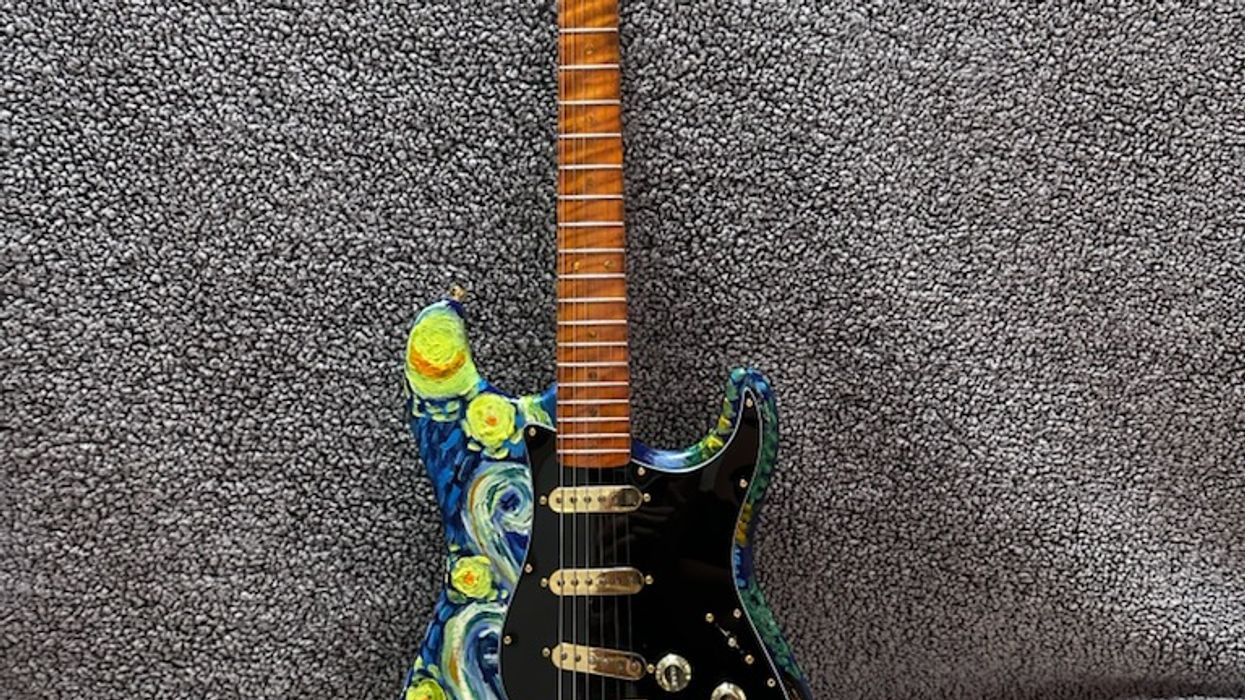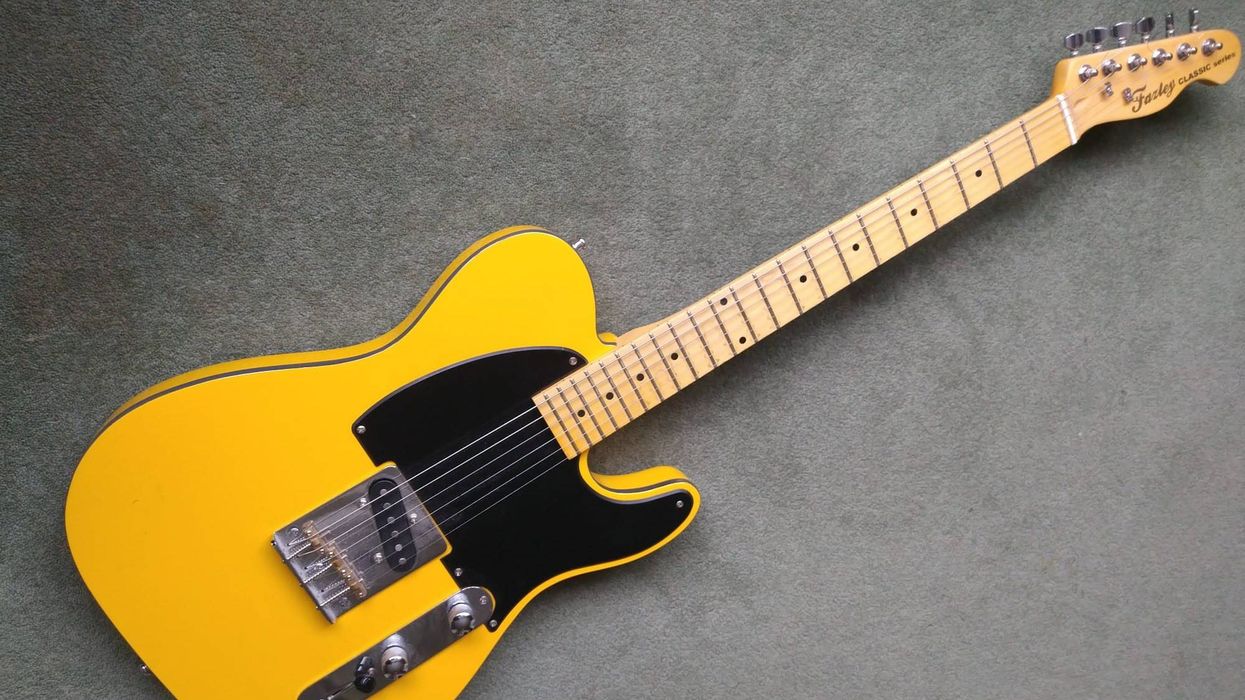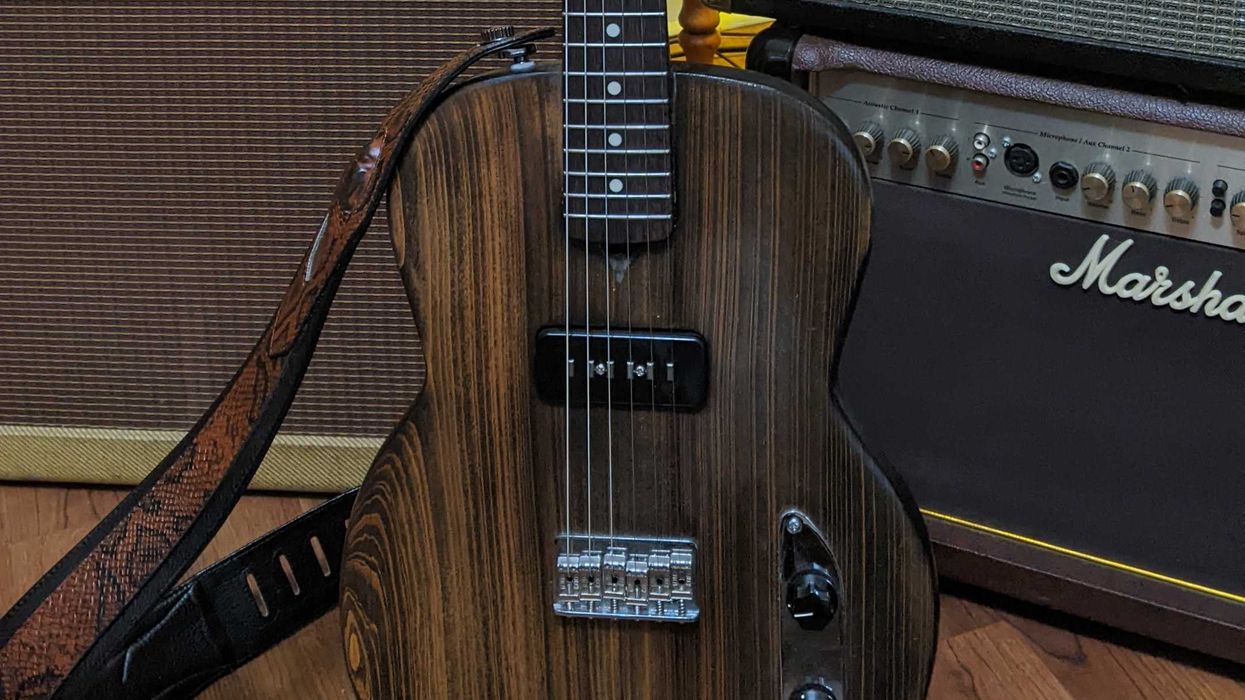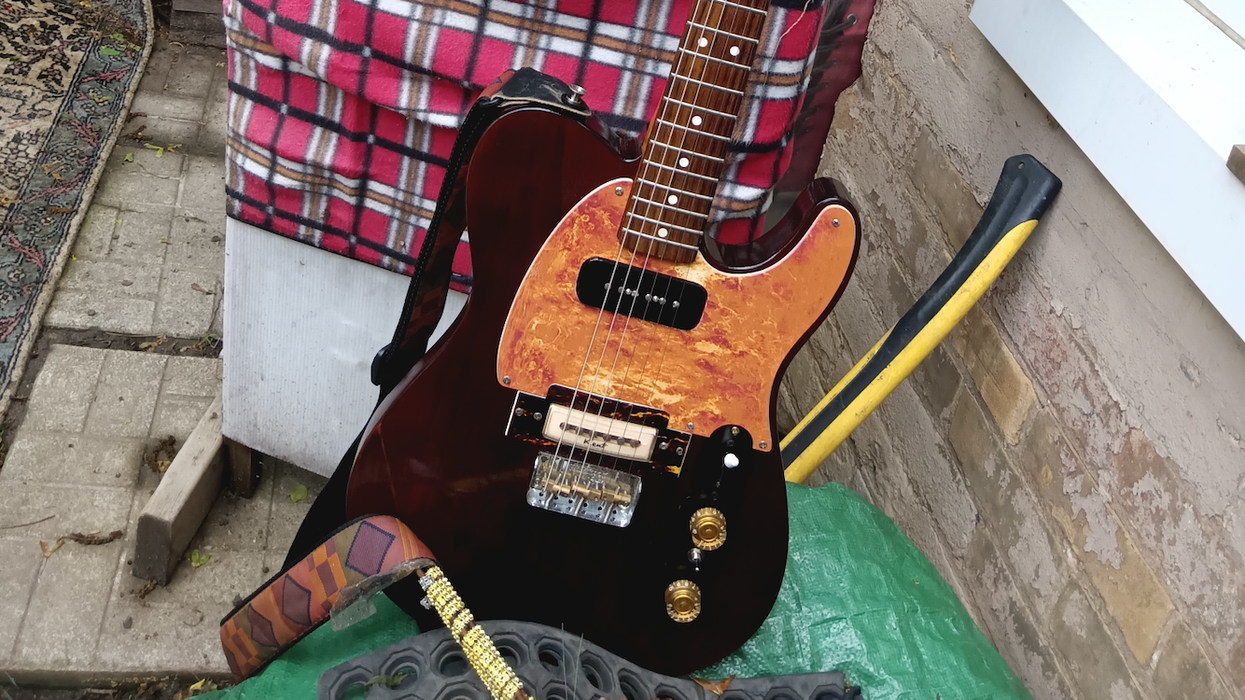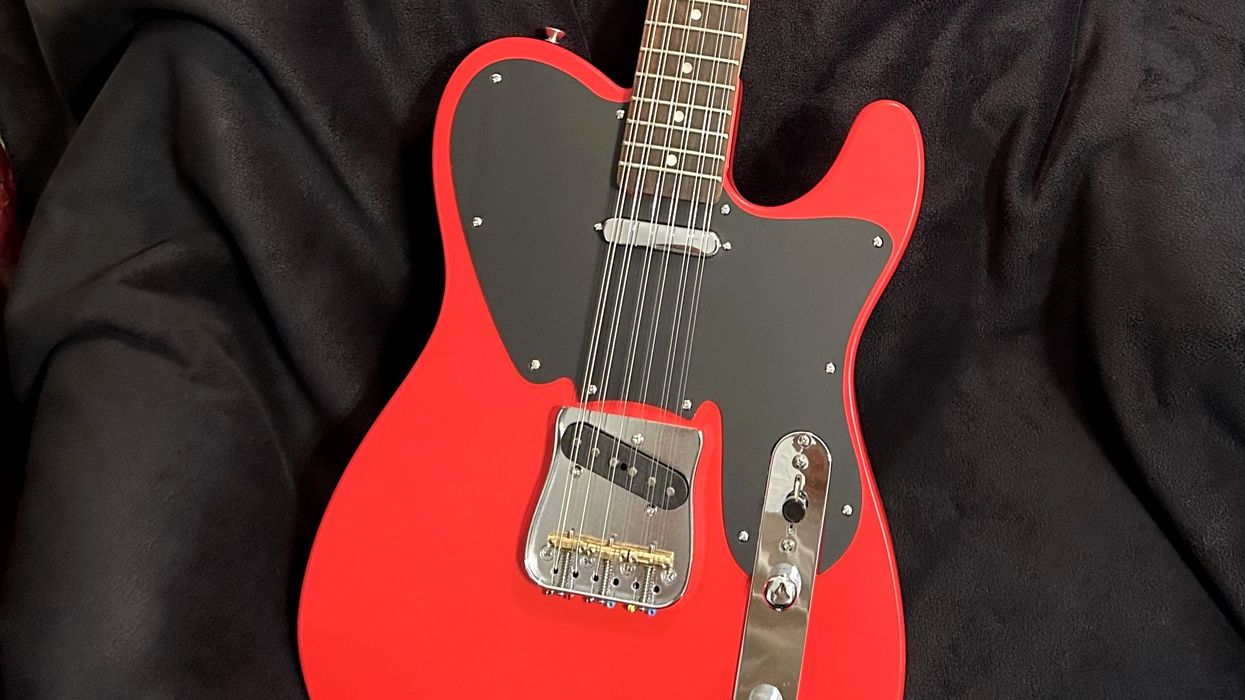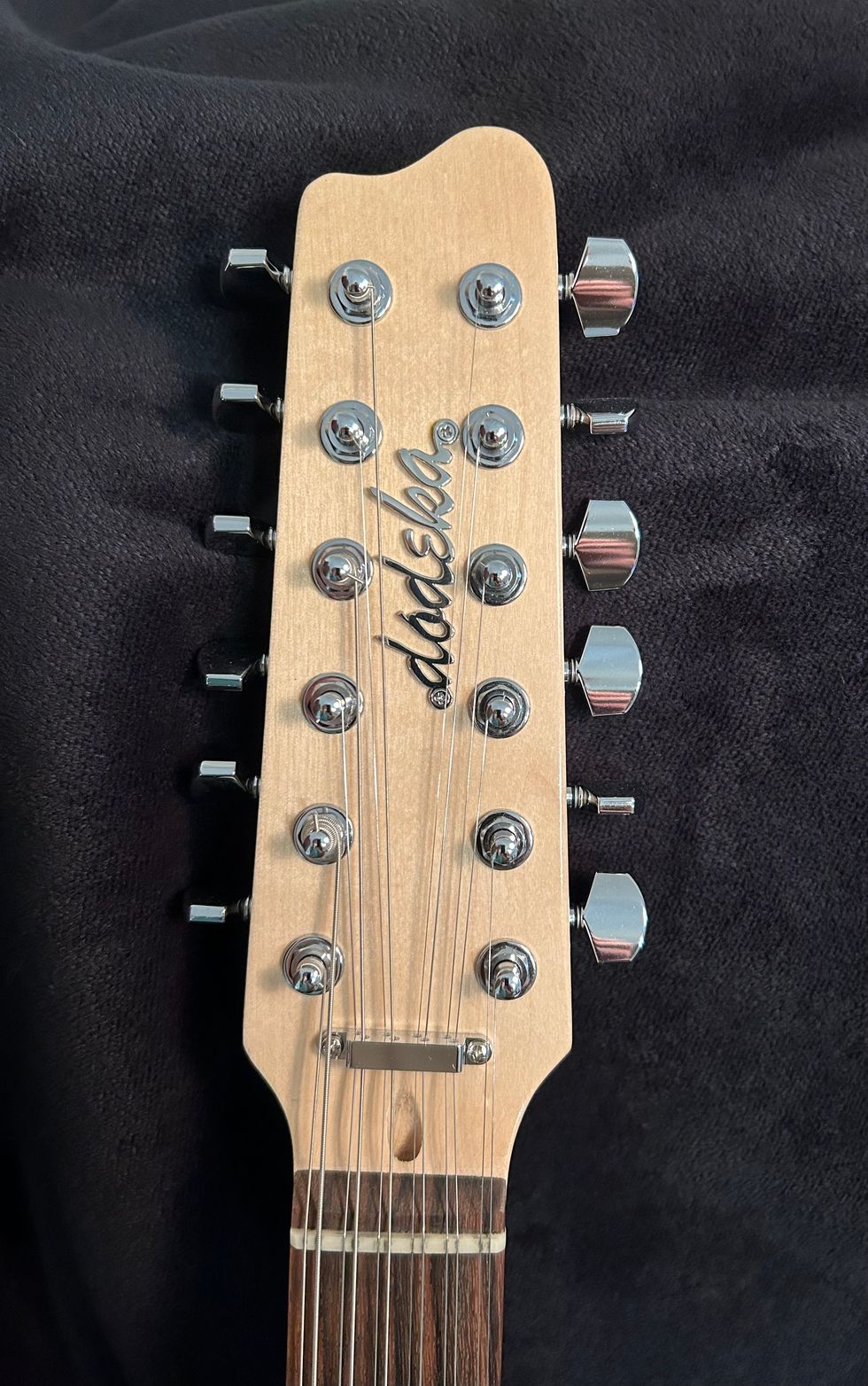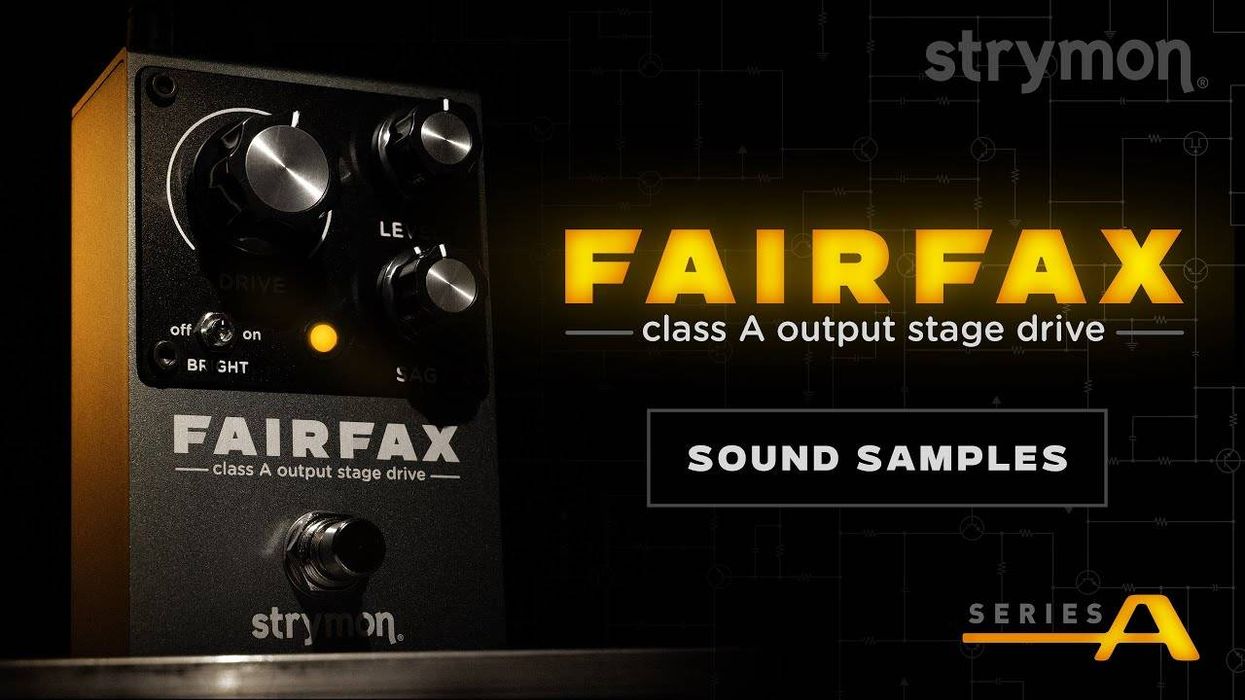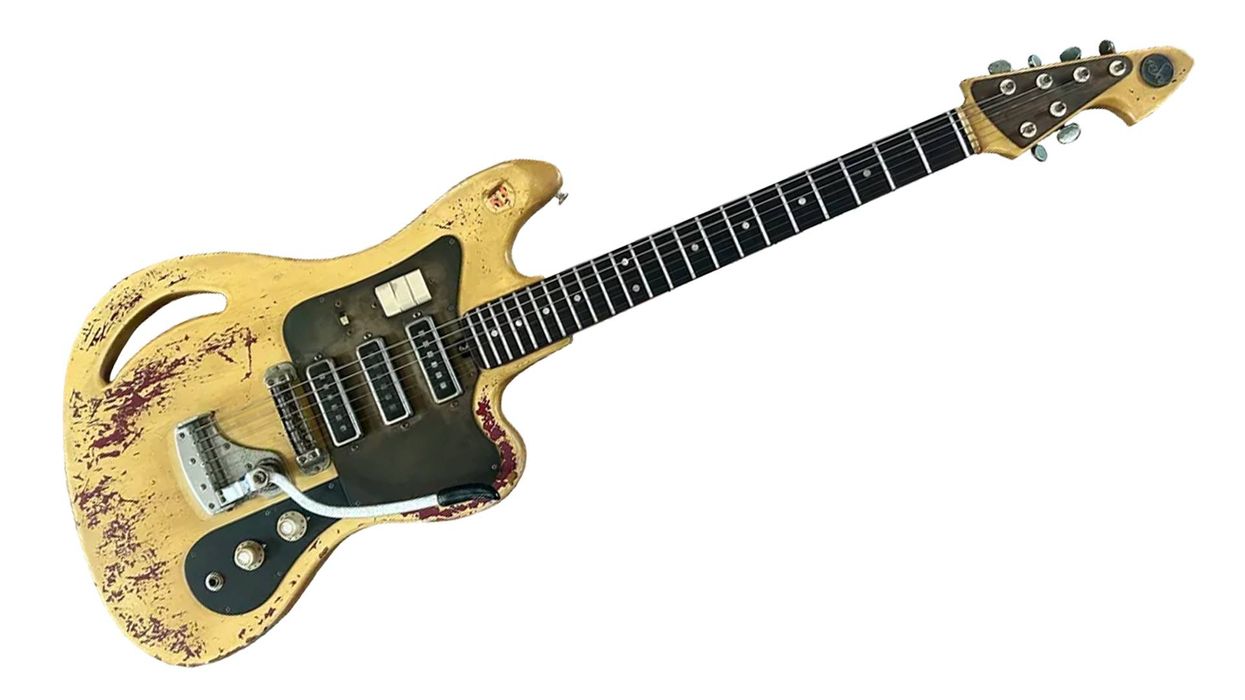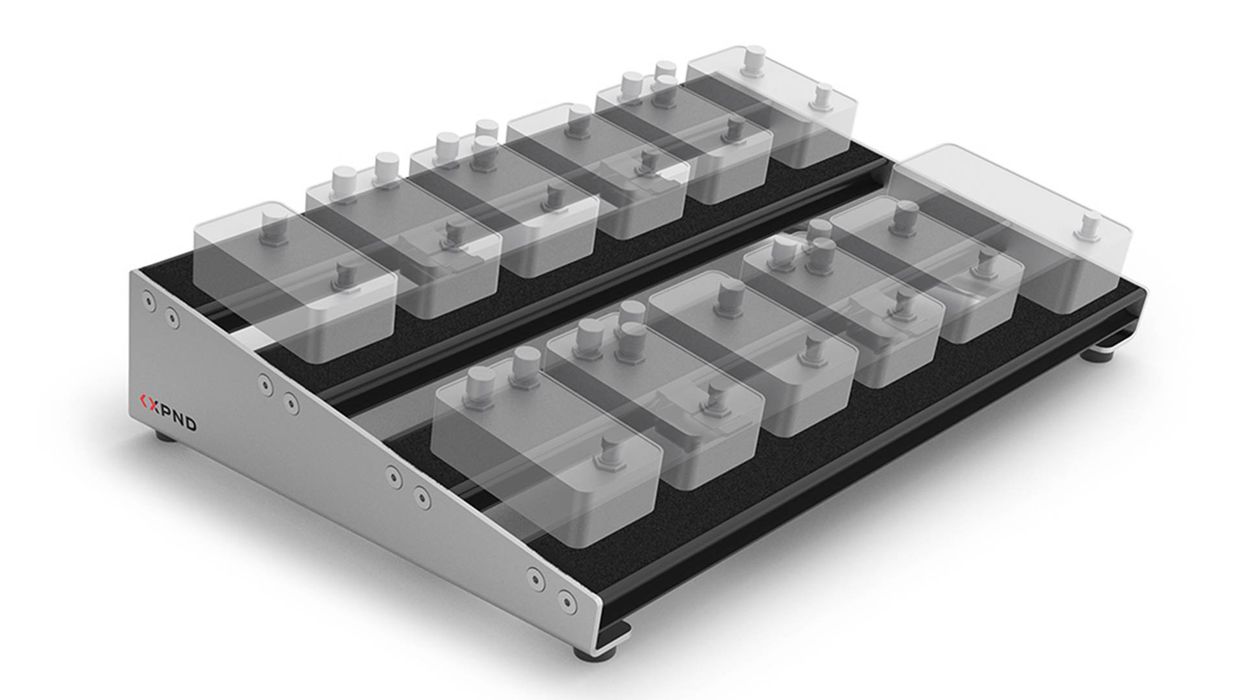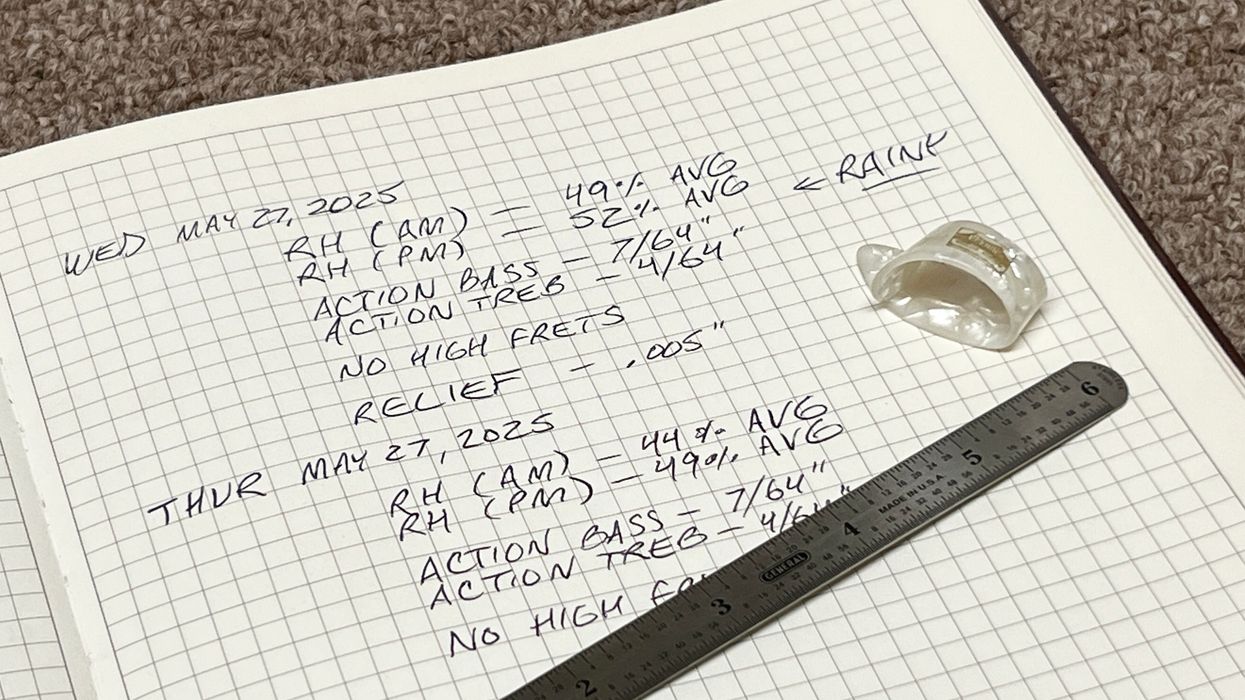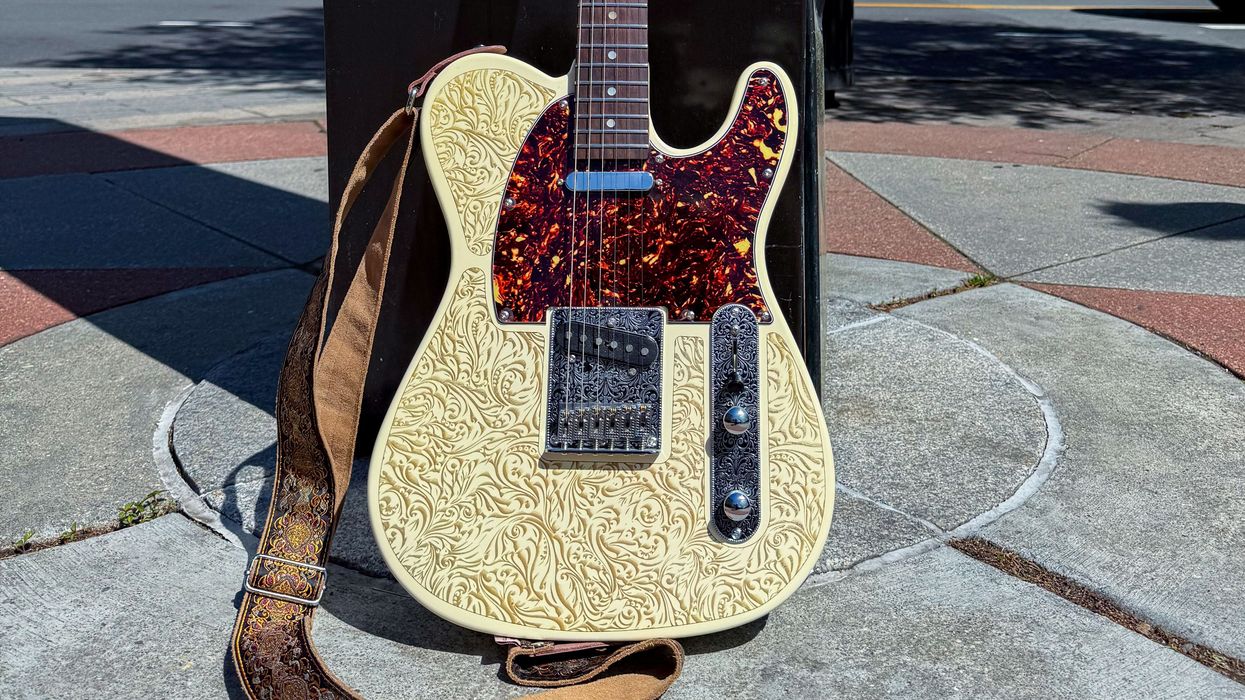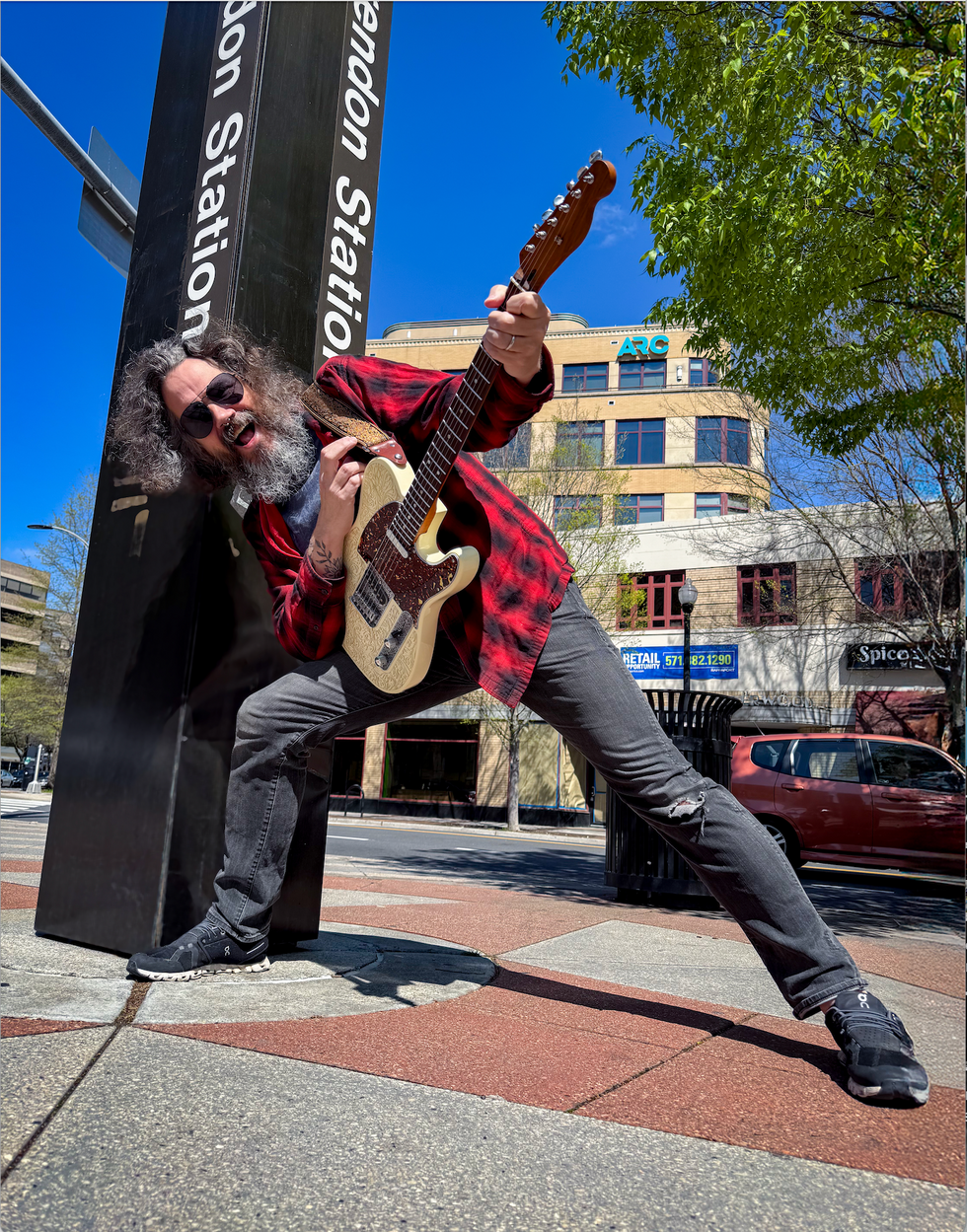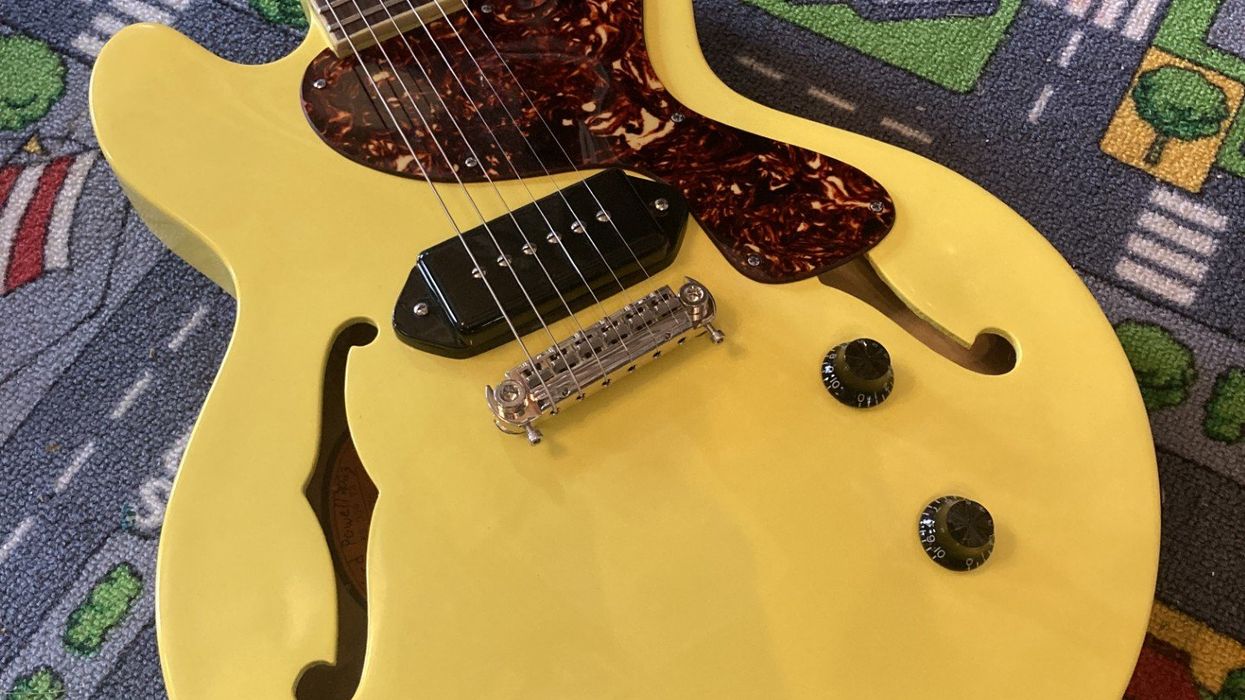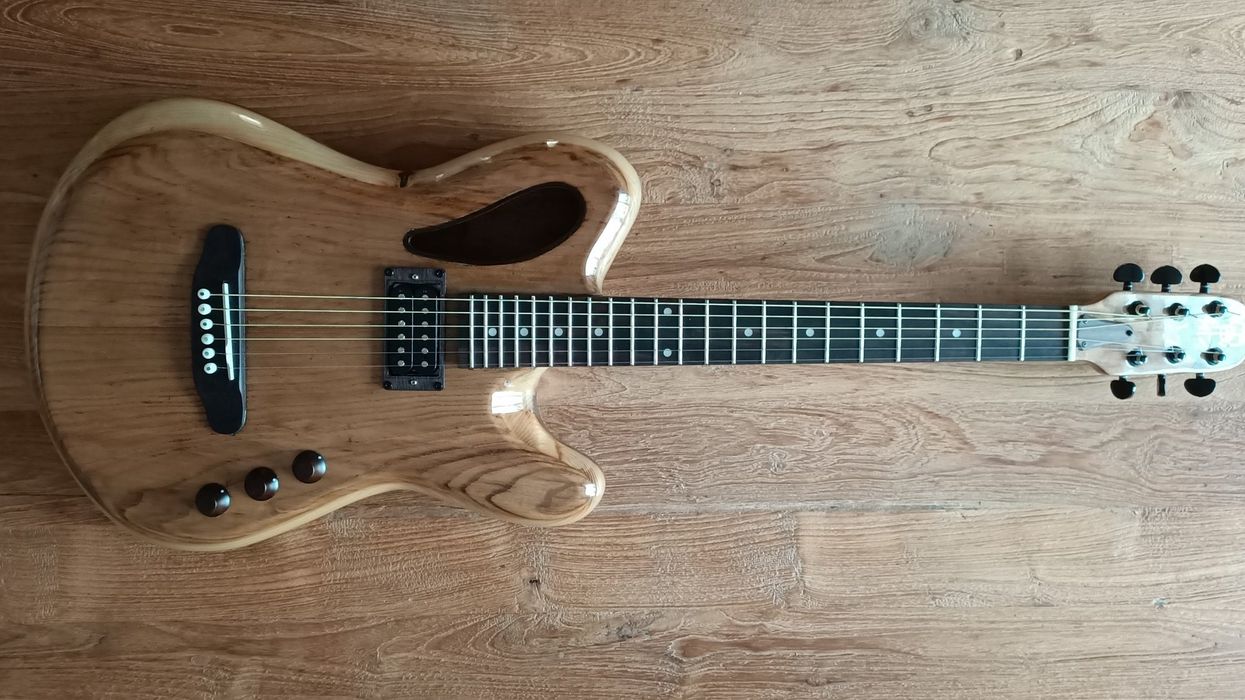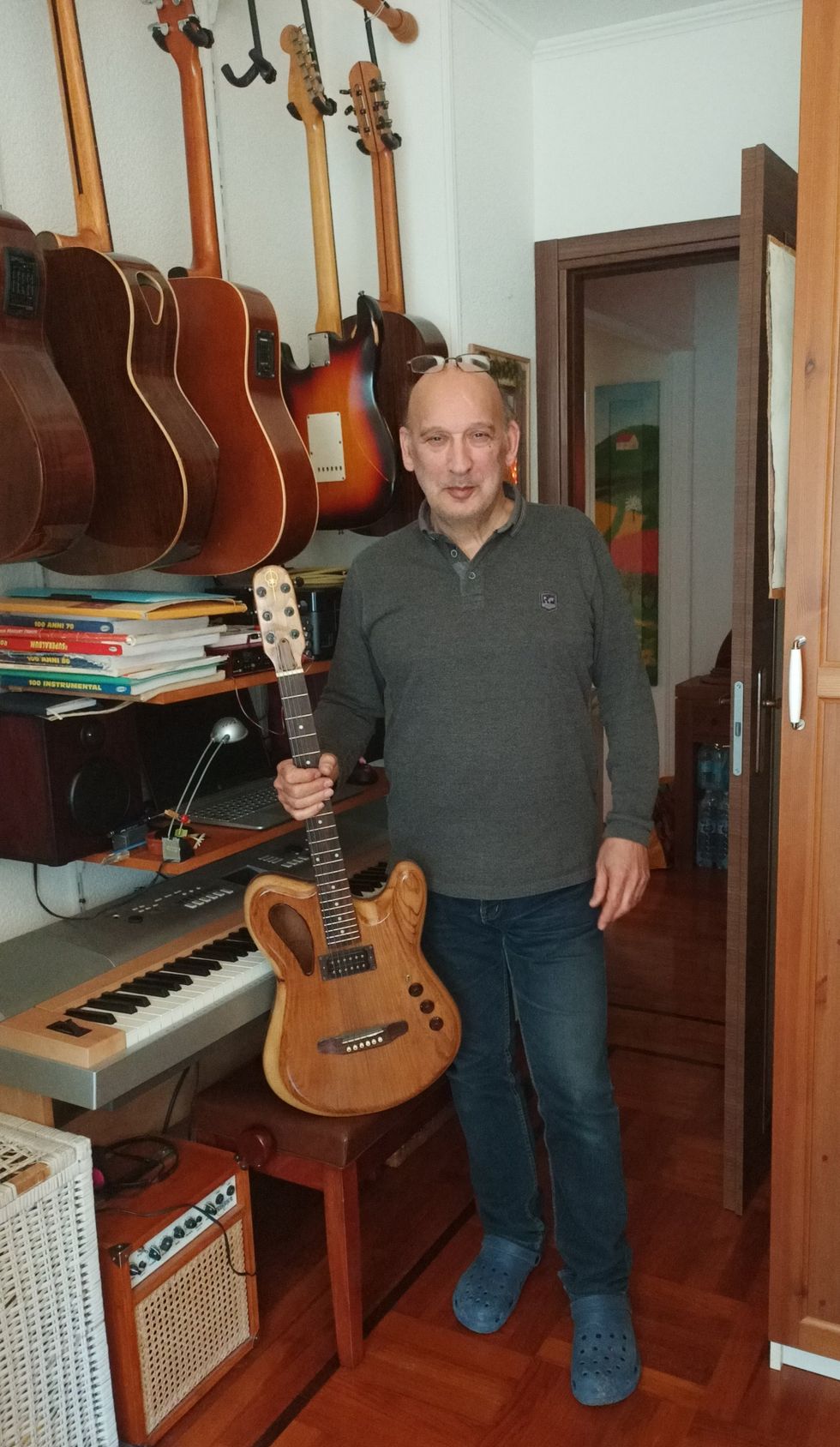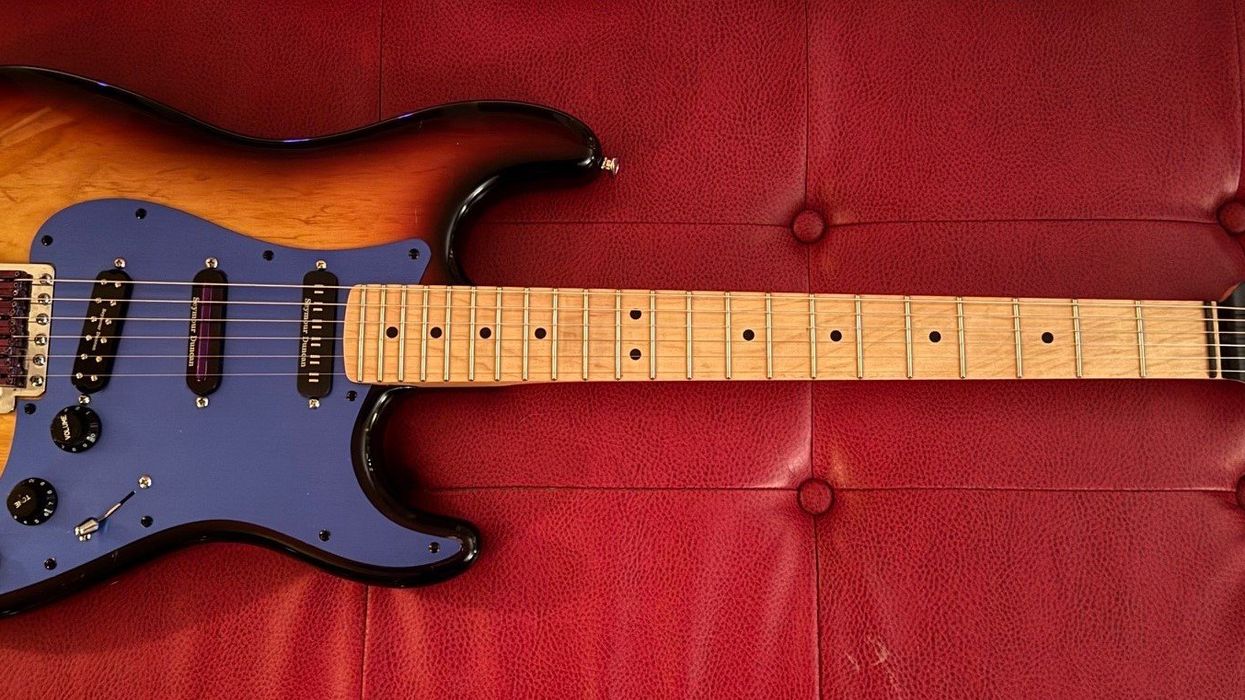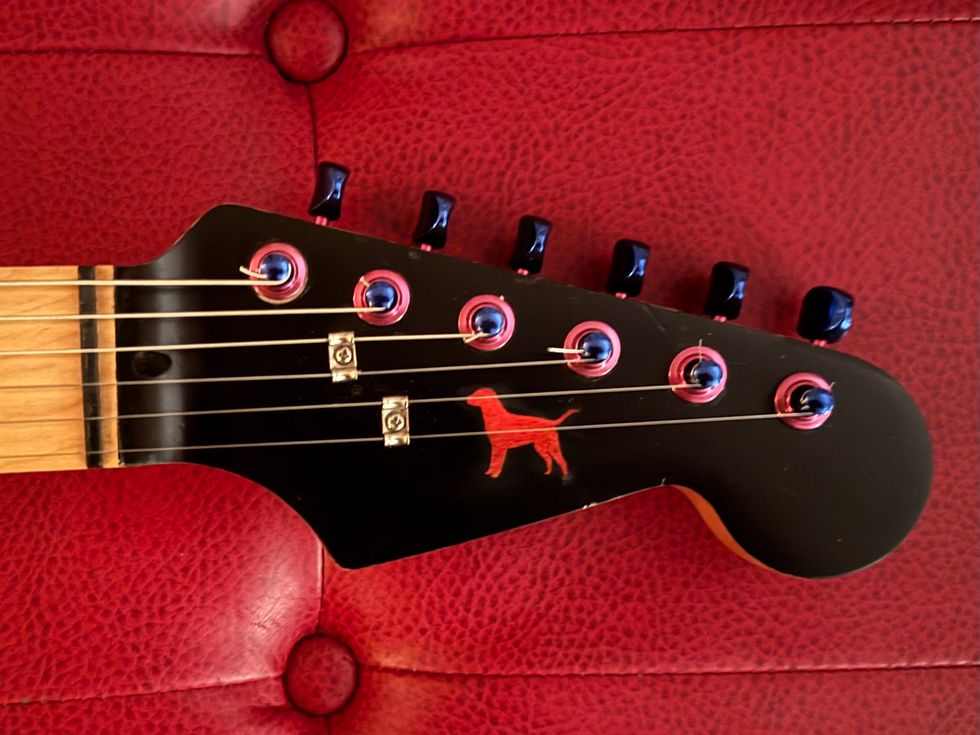This passionate builder designed a custom Strat/Tele pair, both adorned with hand-painted replicas of The Starry Night.
Okay, I plead guilty to having owned over 150 electric guitars in the past 60 years. So, for kicks, with my experience by way of Fender, Gibson, Ricky, Gretsch, PRS, Guild, Teisco, and others, I decided to attempt to make my own axes from scratch. I found that this endeavor was synergistic—much like envisioning, composing, performing, and recording a song. With my long-time San Diego techie, Val Fabela, doing the assembly, I started carefully designing, engineering, and procuring all of the components.
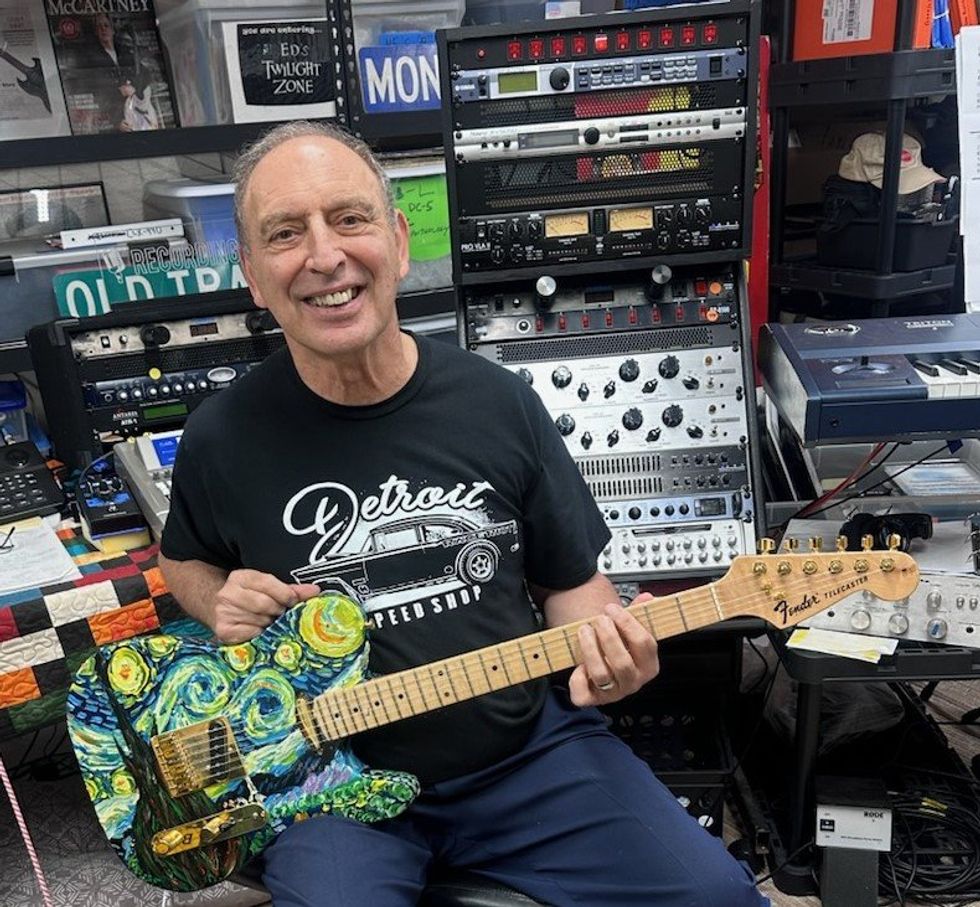
Our winning guitar builder, Edward Sarkis Balian.
The Vincent van Gogh Stratocaster, aka “Vinnie,” was the initial project. Starting with a Canadian alder body, an artist in Italy (who wishes to remain anonymous) applied the Starry Night painting to the front, sides, and back. The heavily flamed, roasted maple neck has the typical 21 frets with a 25.5" scale, and sports yellow pearl-dot inlays. After careful consideration of my playing styles, I went with a configuration using Fender ’57/’62 Stratocaster pickups. I used an upgraded, noiseless, 5-position Switchcraft assembly for the switching circuit. Fender locking tuners, a custom-fitted bone nut, and a Kluson K2PTG 2-point whammy system and brass bridge complete the low-action setup. Overall gold hardware completes the look. Vinnie’s fighting weight is 7.1 pounds.

This is what stars look like from further in space, at least as far as this special build is concerned.
I was so happy with this Strat that I decided it needed a brother, so I started on a Tele. Logically, I named the Tele “Theo,” after Vincent van Gogh’s younger brother. Again, with a Starry Night body painted by the same artist, I coupled a Canadian alder body with a lightly roasted, flamed-maple Stratocaster neck. (Hey, if it was good enough for Jimi to experiment with a Strat neck on a Tele body, why not try it?) And, as expected, my techie Val did a brilliant job of joining the neck to the body.

The Van Gogh Tele, aka “Theo,” built to similar specs as the Strat and also featuring a lightly roasted, flamed-maple Strat neck.
For pickups, I went with Fender’s vintage-correct ’64 Tele set. As for a harness, the super-quality Hoagland Custom 4-position switching is unique, in that it gives a 15 percent boost and a very killer tone in position 4! Fender locking tuners, a custom-cut bone nut, and a Gotoh GTC201 brass bridge completes its setup. Gold hardware complements the overall look. Strangely enough (or perhaps hereditary?), the Tele matches his Strat brother’s weight exactly, at 7.1 pounds.
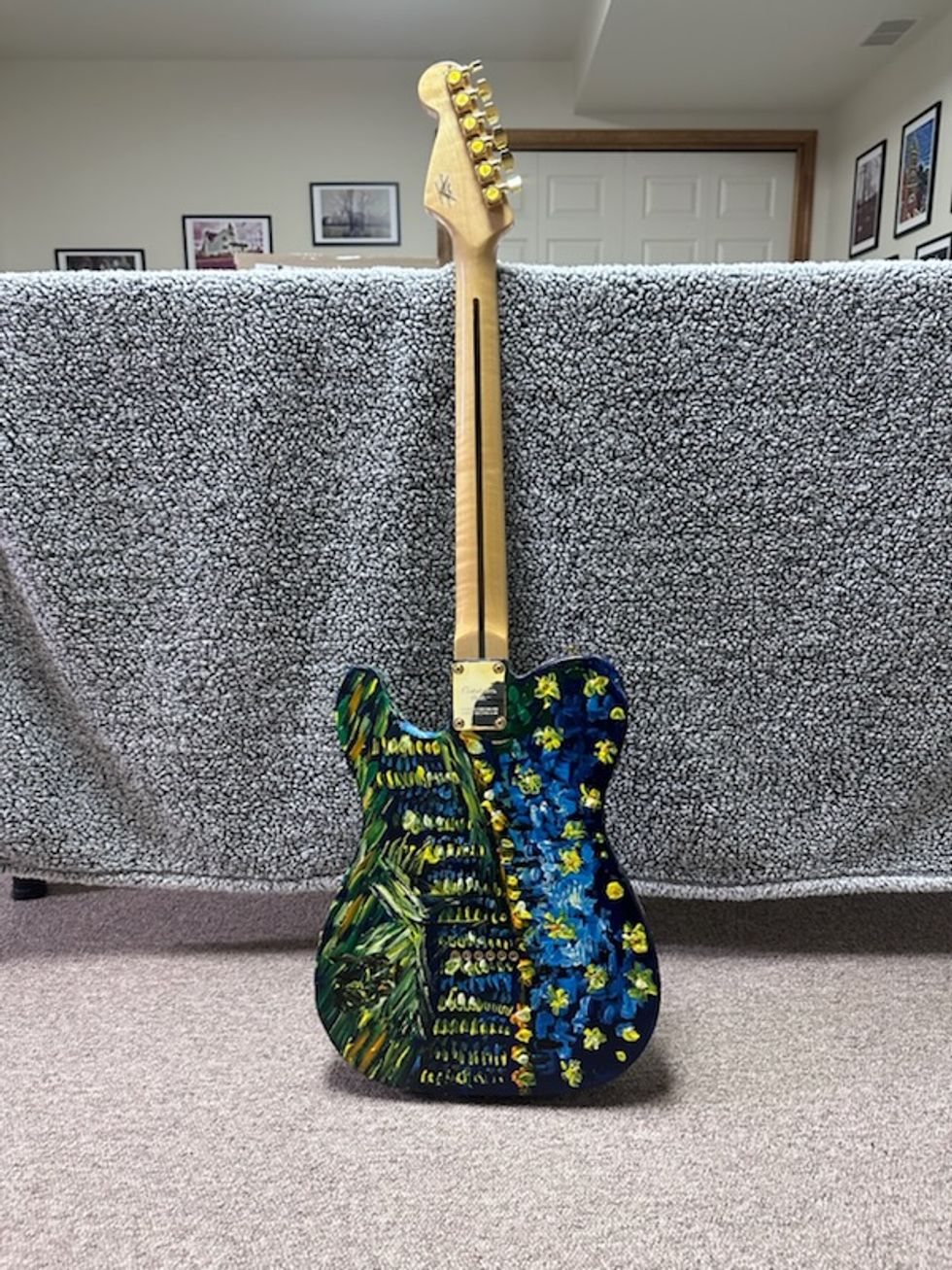
It's not in a museum, the the Theo guitar is certainly a work of art.
But how do they sound? Magnificent! Throw in my trusty Keeley compressor, Fulltone OCD, and Fender or Mesa/Boogie tube amps, and the van Gogh boys both easily equal or surpass my White Penguin, White Falcon, PRS Custom 22, Lucille 345 stereo, 335, SG TV, Les Paul Standard, Esquire, or Joan Jett.
I’m hoping the real van Gogh brothers would have been proud of these two magical, musical namesakes.


